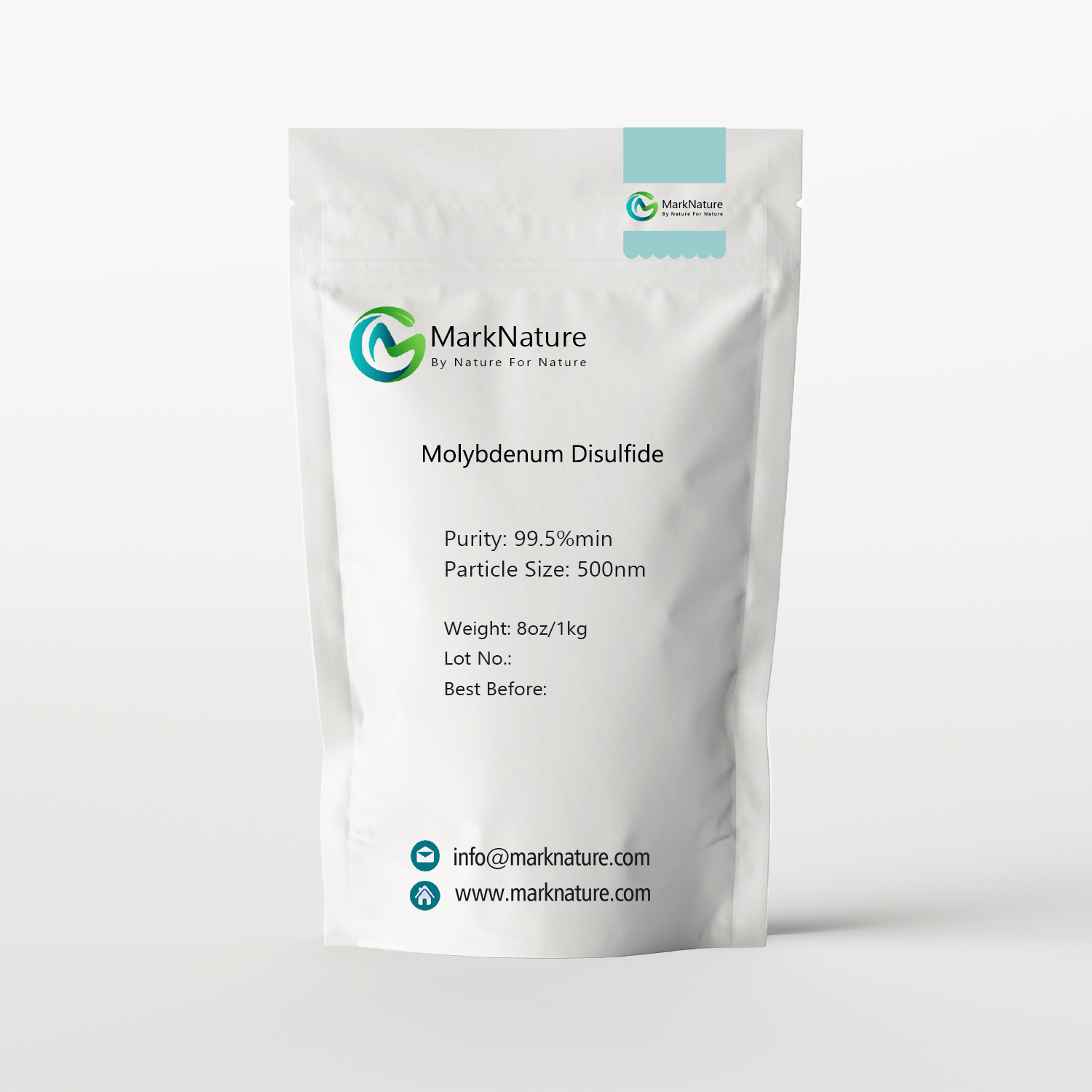Description
Molybdenum disulfide (MoS2) is a naturally occurring mineral that has gained significant attention for its unique properties and applications in various industries. It is a compound that is structurally similar to graphite, with layers of molybdenum atoms sandwiched between layers of sulfur atoms. This structure gives MoS2 excellent lubricating properties, high thermal stability, and strong chemical resistance, making it ideal for use in extreme conditions. Its ability to operate efficiently under high pressure and temperature, coupled with its environmental friendliness, makes it a preferred choice in many advanced applications.
CAS No.: 1317-33-5
EINECS No.: 215-263-9
Chemical Formula: MoS2
Molecular Weight: 160.07
Standard: Enterprise
Crystal Structure: Hexagonal Layered structure
Specification
Appearance: Dark gray or black powder
Assay (BN): 99.5% min
Moisture: 0.3% max.
Particle size (D50): 500 nm
C: 220ppm
Fe: 150ppm
Si: 180ppm
P: 50ppm
S: 30ppm
Sb: 2ppm
Cd: 1ppm max.
Applications:
1) Advanced Lubricants: MoS2 is used to create high-performance lubricants that offer superior lubrication under extreme conditions, such as high load, vacuum, and wide temperature ranges. It is particularly valuable in precision machinery and space applications where traditional lubricants are inadequate.
2) Electronics: Utilized in the manufacture of transistors, photodetectors, and other electronic devices due to its semiconducting properties. MoS2 is known for its thin-layer capabilities and effective electron mobility, which are crucial in the miniaturization of electronic components.
3) Energy Conversion and Storage: MoS2 is employed in hydrogen evolution reactions as a catalyst, enhancing the efficiency of water splitting in hydrogen fuel production. It is also explored for its potential in improving the efficiency and capacity of lithium-sulfur batteries.
4) Catalysis: Used as a catalyst in the petrochemical industry for the removal of sulfur from fuels. Its high surface area and active sites facilitate efficient catalytic reactions, contributing to cleaner and more efficient fuel technologies.
5) Coatings and Polymer Additives: Incorporated into various coatings to improve wear resistance and reduce friction. MoS2 is also added to polymers to enhance their strength, thermal stability, and to provide UV protection properties, making it valuable in automotive and aerospace materials.

